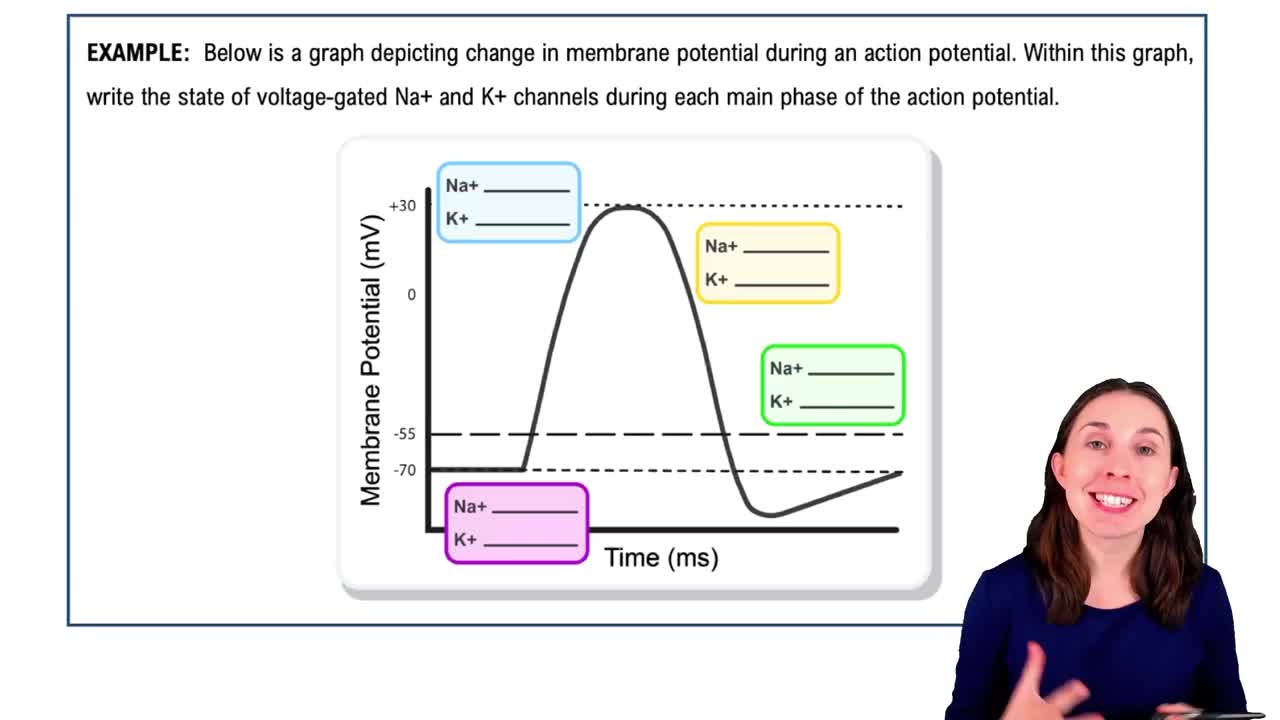Mark the following statements as true or false. If a statement is false, correct it to make a true statement.
The rapid depolarization phase of the contractile cell action potential is due to the opening of voltage-gated potassium ion channels.
 Verified step by step guidance
Verified step by step guidance Verified video answer for a similar problem:
Verified video answer for a similar problem:



 7:18m
7:18mMaster Introduction to Action Potential in Cardiac Cells with a bite sized video explanation from Bruce Bryan
Start learning